Bell hangers and nightmen, leech merchants and lightermen; these are just some of the 19th-century characters you may find lurking within the pages of a Sands & McDougall directory.

Old Prince’s Bridge & St. Paul’s by moonlight, 1857; H287
First issued in 1857 by stationer John Sands and his brother-in-law, Thomas Kenny, the directories were originally intended to provide a list of the ‘head’ of every household in Melbourne, along with the city’s trades, businesses and organisations. [1]
‘Walkers’ were employed to door knock every street address to find out the name and occupation of those residing within. If no-one was home, the walker would leave an information sheet and an envelope, so that the resident could post the information back to Sands & McDougall. [2]

Printing the directories was an onerous affair. Each page was manually composed – letter by letter. Some directories consisted of as many as 10,000 letters. Once this arduous task was completed, the metal type on each page was preserved in order, so that details that remained unchanged were ready for printing the following year. [3]
Sands & Macs, as they are affectionately known, are a boon for researchers, historians, and genealogists. For example, this snapshot, below, lists the businesses and residents who occupied a small section on the north side of Bourke Street, between a right-of-way and Russell Street, in 1860:
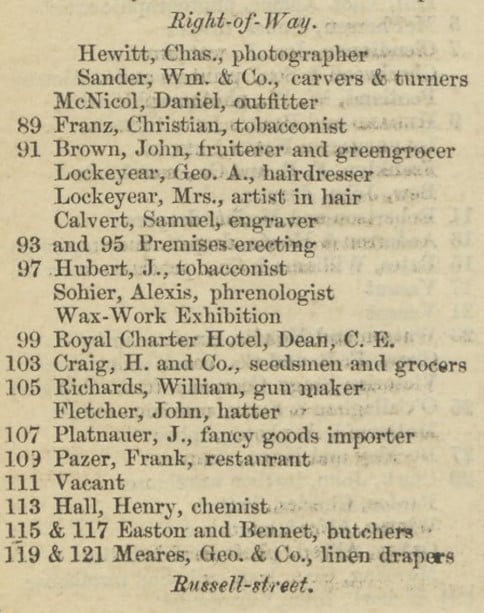
Artist Samuel Calvert resides at number 91, where he operates his engraving business. It’s a noisy time for Samuel – you can see there’s construction work going on next door. A few doors down, phrenologist Alexis Solier plies her trade, and next door to her is Melbourne’s own Wax Works Exhibition. The remaining premises are an eclectic mix of tobacconists, hairdressers (or ‘artists in hair’), grocers, gun makers, and more.

The Trades and Professions listings in the Sands & Macs make for fascinating reading, and an interesting study of our society’s priorities. For example, in 1857 when the directories began, we find long lists of merchants, auctioneers, brokers and shoe makers. There are also 17 coach builders, 19 whitesmiths, 33 saddlers, 13 sail and tent makers, 10 coal merchants, 5 nightmen, 2 lightermen, 5 oil and colourmen, 1 chaser, 4 bonnet makers, 1 flag maker, 1 bird cage maker, and one self-described ‘naturalist,’ residing at 46 Swanston Street.
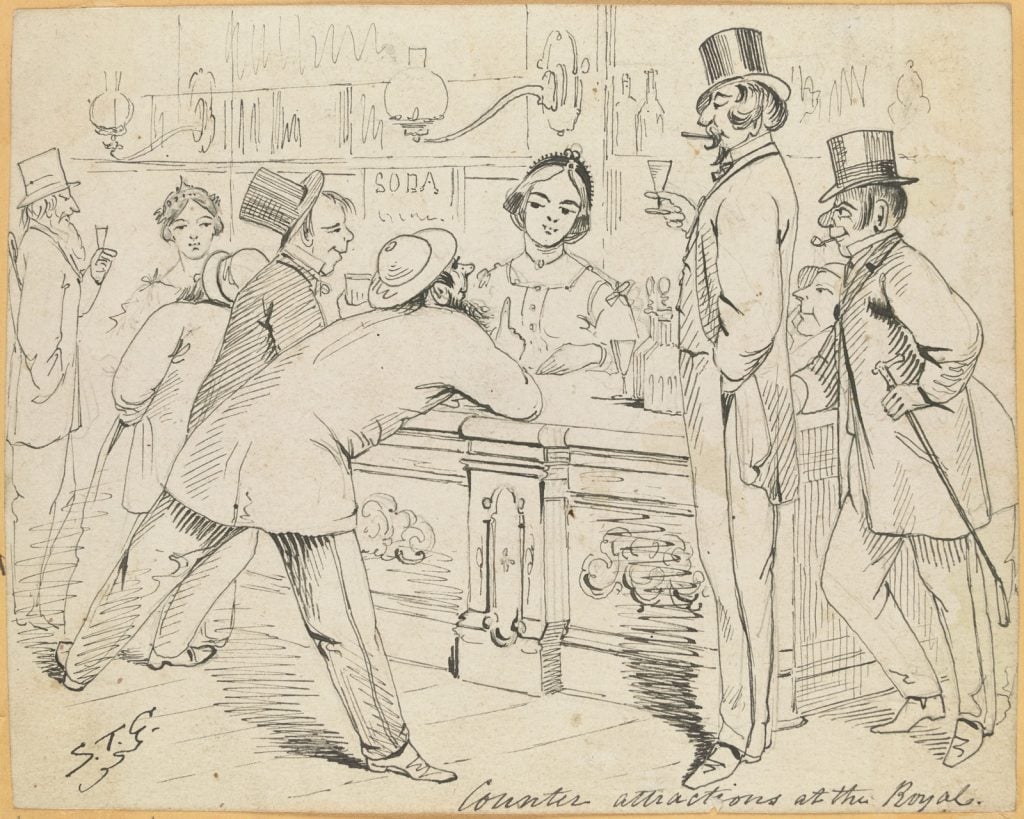
It’s no secret that Melburnians enjoy a drink, and hotels are high on the list of the city’s priorities – there are around 145 hotels listed in the metropolitan area. There are also around 100 boarding and lodging houses providing food and shelter for the poor and needy.
Fast forward to 1890, and the directory tells a very different story. In the intervening years, Melbourne has undergone a land boom fuelled by rising real estate prices and cashed up speculators. The resultant directory of trades and occupations has expanded from a modest 35 pages in 1857 to a whopping 128 pages of listings.
There are some interesting trends reflected in its pages. The number of women listing themselves as midwives has grown from just two women in 1857 to listings for over 60 ‘accoucheuses.’ [4] The temperance movement has made significant headway, and coffee palaces and temperance hotels are flourishing. The growth in dairymen is striking, from just three listings in 1857 to well over 200 in 1890.
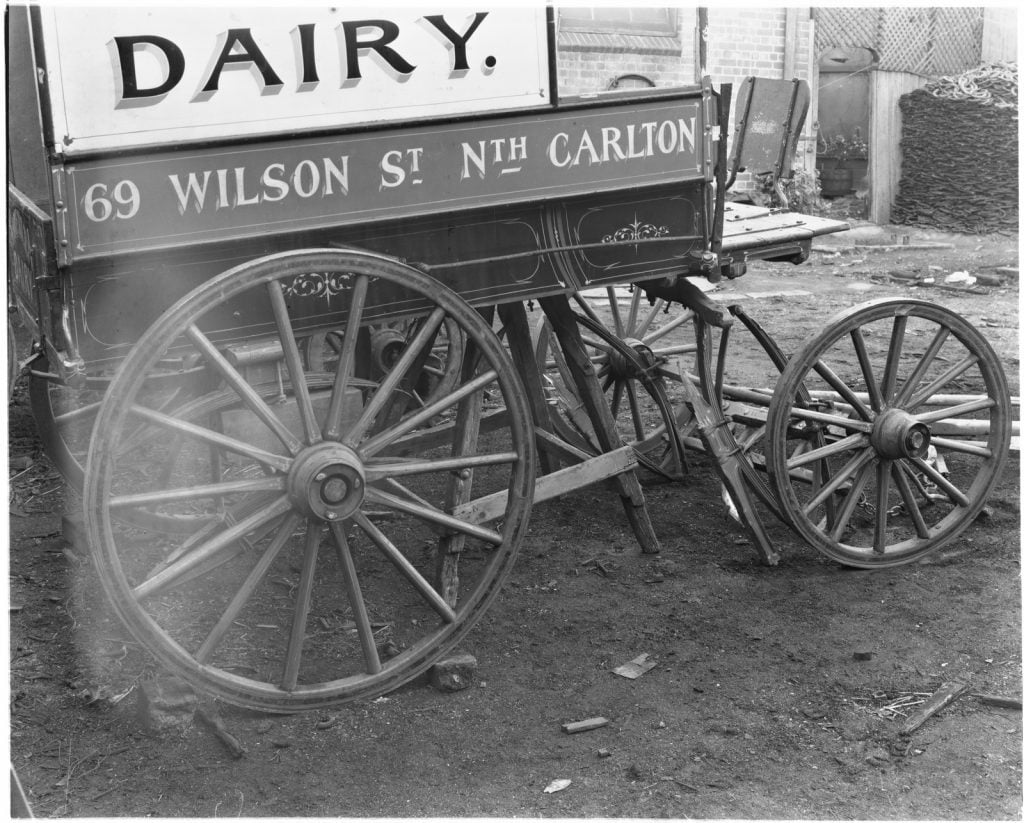
Carriage, coach and waggon (sic) builders appear to be busier than ever, as do fruiterers and greengrocers, boot makers and shoe makers. Melbourne’s lone bird cage maker has gone, but a number of intriguing new tradespeople have made an appearance, including three blue makers, six bird fanciers, and 18 furriers and curiosity dealers.
Another interesting development you can see is the change in Melbourne’s street numbering system. Prior to 1887, the city was divided into east and west, with Elizabeth Street functioning as the dividing line. So for example, in 1860, the address of Samuel Calvert’s engraving business was ’91 Bourke Street East.’
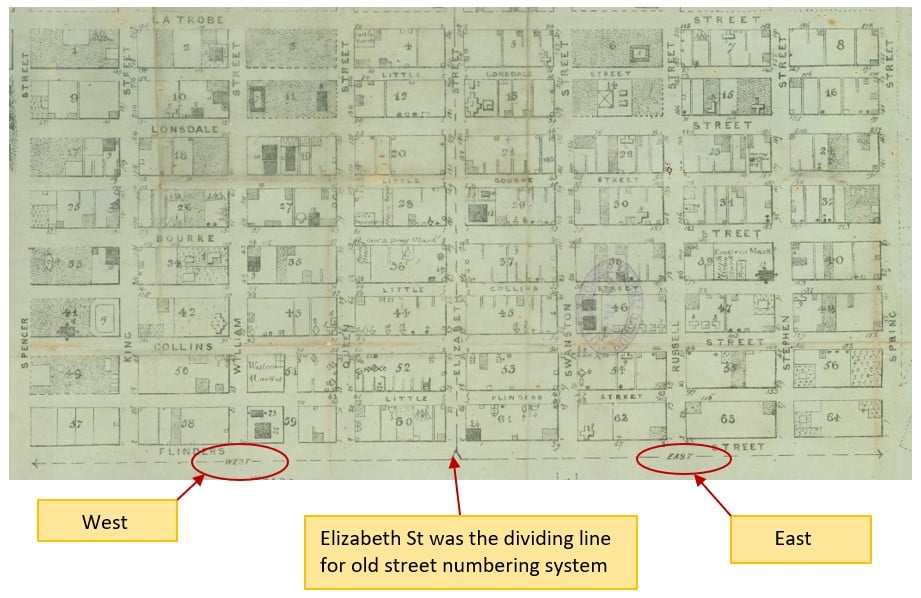
Thankfully, Melbourne’s idiosyncratic numbering system was changed in 1887, when the Melbourne City Council ordered the renumbering of all premises in the city, so that they would run consecutively, ‘even numbers on the north side of streets running east and west; and on east sides of streets running north and south.’ (The Argus)
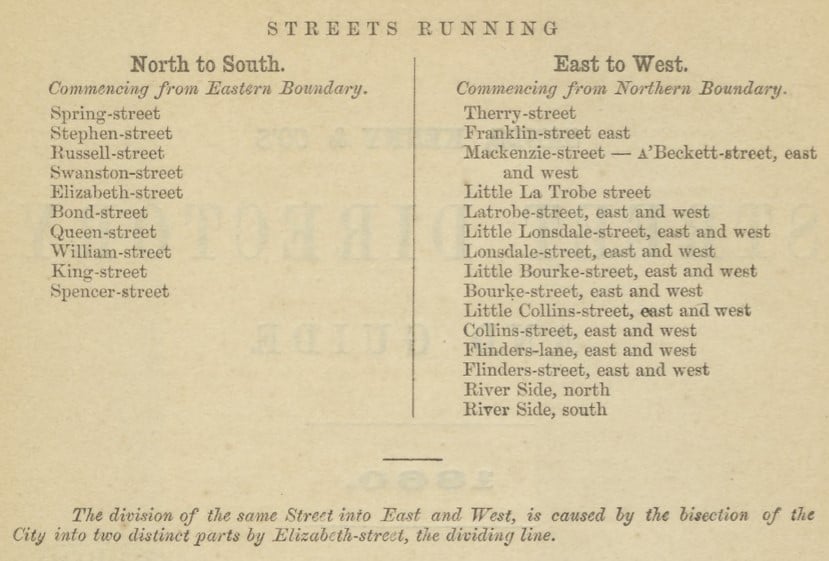
After documenting Victoria’s history for 118 years, Sands & McDougall finally stopped issuing directories in 1974. Many reasons have been suggested for their demise: the advent of radio, tv and telephones; the growing number of competing directories; a decline in the number of businesses willing to pay for advertising space; not to mention the sheer size of Victoria as a place to canvas.
Whatever the reasons, one thing is clear. They have left us a rich and astonishing history, that may just be the closest thing to time travel there is.
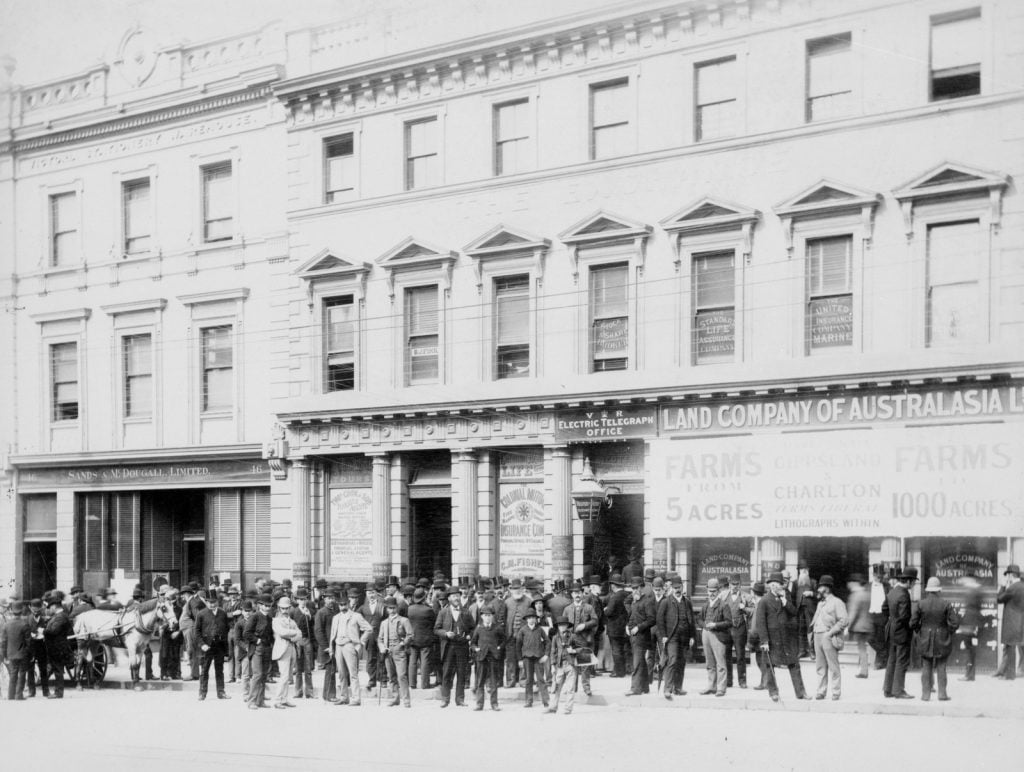
References
[1] From 1902, regional areas were also canvassed.
[2] Stephens, A & Davis, O, 2014, Page not found: the lost world of the Sands & McDougall’s directory of Melbourne, Melbourne City Council, Melbourne, Victoria, p 8
[3] As above, p 11
[4] An accoucheuse was a female obstetrician or midwife

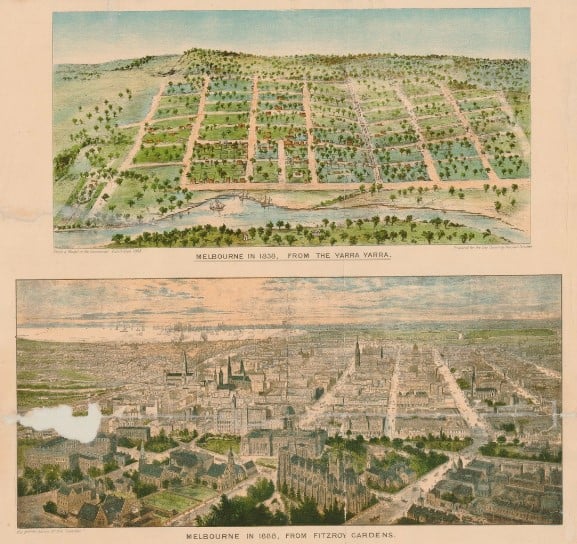

As I understood it, the Victoria Police rang the death knell on the Sands & Mac Directories. They cancelled their standing order and it was no longer economically viable to keep printing. The size and weight of them by 1974 would have made them undesirable in many offices. Probably it was the size of Melbourne and suburbs that finally killed it.
Thanks in advance for researching Benjamin West
Such a great blog post Sarah. Love the Sands and Macs!
Thanks Ann!
This is fascinating! And I am intrigued by the ‘leech merchant’ – presumably some sort of blood-letting business, take-away leeches? Or on the spot?
Great subject, the directories…..
Thank you, Sarah.
Thanks Judy. Yes, it appears that the leech trade was alive and well in Australia in the nineteenth century. Trove abounds with advertisements for “fresh Murray leeches”, and it appears from this advertisement in the Kyabram Free Press that Melbourne hospitals were still soliciting them as late as 1916!
My Father George White worked at Sands and McDougall do you have any information
Hi Julie, Thanks for your interest in our blog. I have passed on your question to our librarians, one of whom will be in touch. Sarah
Hello I am the grandson of the artist Percy Leason My Mum had informed me that his first job as an artist was working for Sans McDougall making labels for jam tins do you have any prints of old tin labels from the early 20th century?
Hi Mike, Thanks for your question. I will log it with our Ask a Librarian service, and one of our librarians will get back to you. Sarah
My Great grandfather was Walter Frederick Sands of Sands & McDougall in the 1900’s – in 1942 the registered office was 365 Collins St. Love the content if anybody has any more info in general we would be interested.
Thanks Andrew. I’m glad you enjoyed the content. The Library has a great book: A Century in printing : the story of Sands & McDougall Pty. Ltd. during its first hundred years 1853-1953 that may be of interest. We also have a large amount of digitised photographs. There was an early series taken in 1896,
and also a wonderful series taken by photographer Maggie Diaz in 1964. Sarah
I hope the SLV digitise the 1886-1891 years. It’s been hard to research with some gaps without a digital resource and I think they have the originals at the library. Thanks for a great and interesting read!
Hi Caleb, Thanks for your interest. The Library is working to progressively fill in the gaps, but at the moment we are still in the digitising phase. In the mean time, the University of Melbourne has digitised every year of the directories from 1857 to 1880. If you are registered Victorian member of the State Library, you can also access select years of the directories on Ancestry Library Edition, although not the years you are looking for unfortunately. The Library has the complete set available to browse in the Family History and Newspapers Rooms. Hopefully you’ll be able to access them again soon. Sarah
My understanding too is that Mary MacKillop worked at Sands & Mac in her early days having lived close to what is now the CBD. A notable employee!
Hi, Sarah, I am interested in the connection between the Post Office and Sands and McD. They apparentty printed Post Office business documents such as letter registration receipts. I believe the company printed Melbourne tram tickets, so what about registration labels for attaching to postal articles? These would be similar to tram tickets and were numbered labels – it seems a likely contract for such a company.
Hi Kevin, thanks for your enquiry. I will log your question with our ‘Ask a Librarian’ service and one of our librarians will be in touch. Sarah
Thank you for this wonderful blog. I am very interested in the history of Sands and McDougall in the 1860s. Especially records of employees or accounts around 1864. In that year, my great great grandfather arrived in Melbourne. The story is that he was forced aboard a ship leaving Deal in Kent, lost his memory, and in 1864 regained it when he saw an envelope machine outside Sands and McDougall. He was then employed by them, and they helped to facilitate the migration of his wife and children from Deal.
A newspaper article about his disappearance is dated 13 Feb 1864.
His family left England in May 1866 and arrived in Melb in August 1866.
Any suggestions about where to look for information relating to my great great grandfather’s employment etc would be very much appreciated.
Hi Cathy, thanks for your interest. I’m glad you enjoyed it! I will log your enquiry with our ‘Ask a Librarian’ service, and one of our librarians will be in touch. Sarah